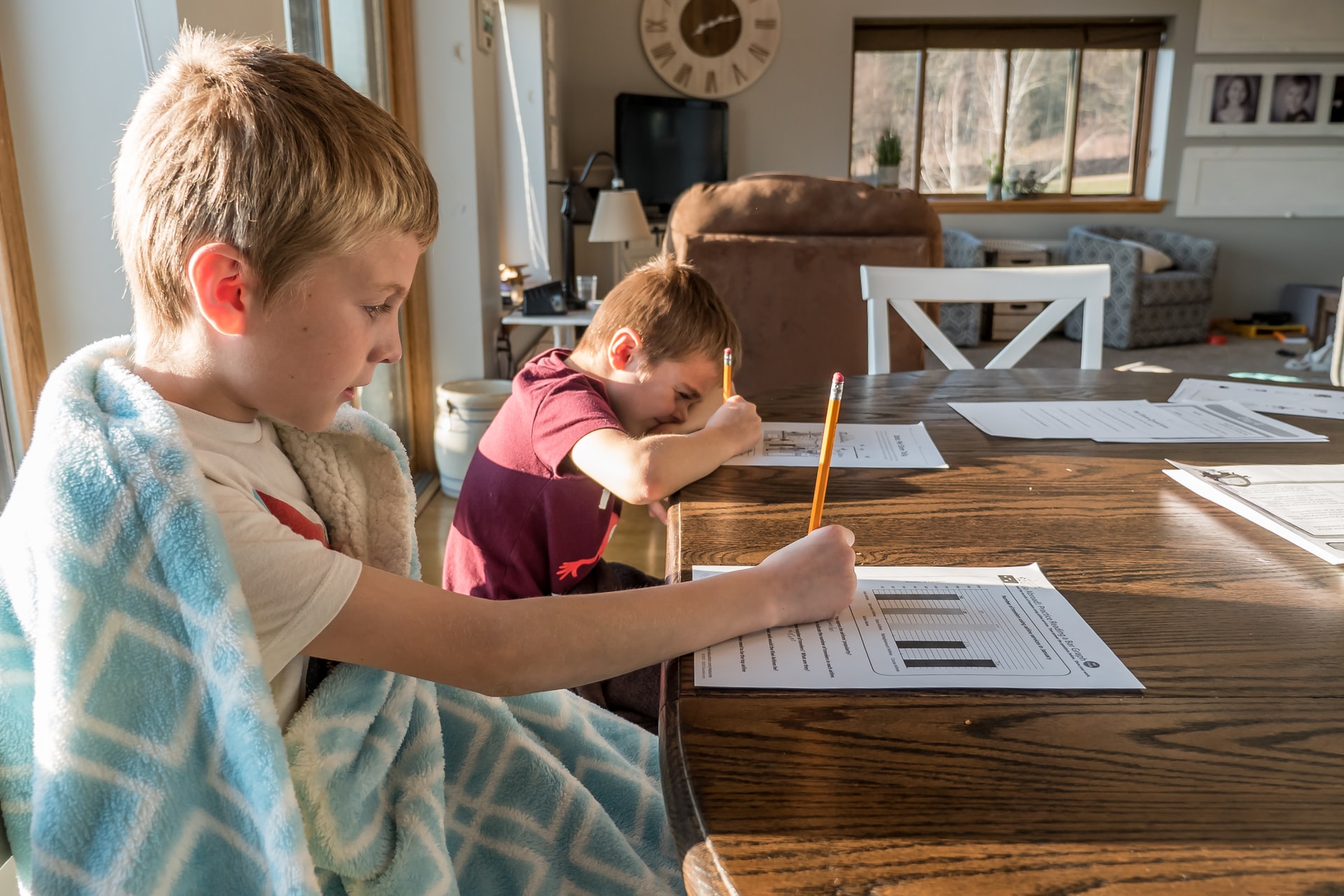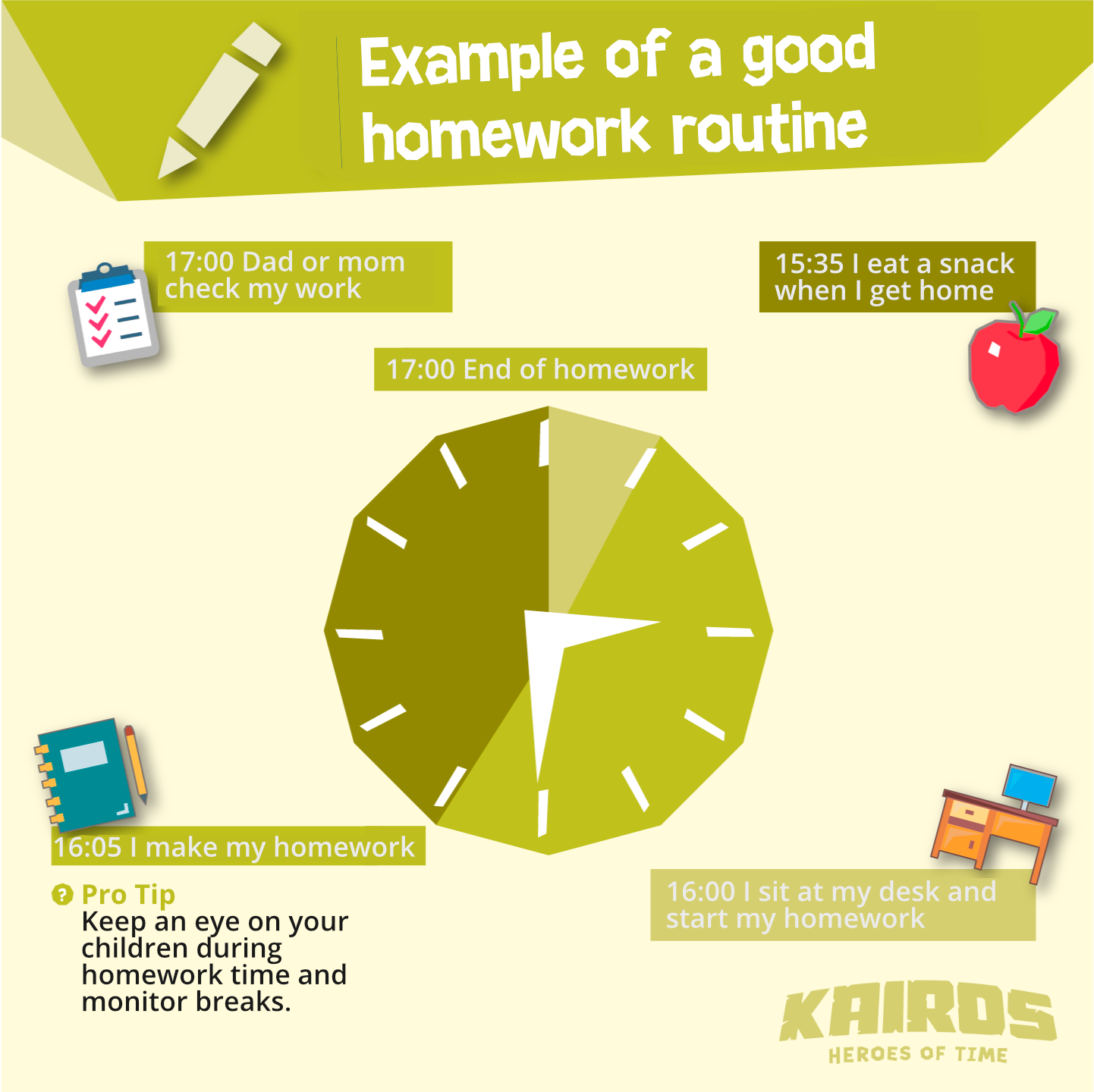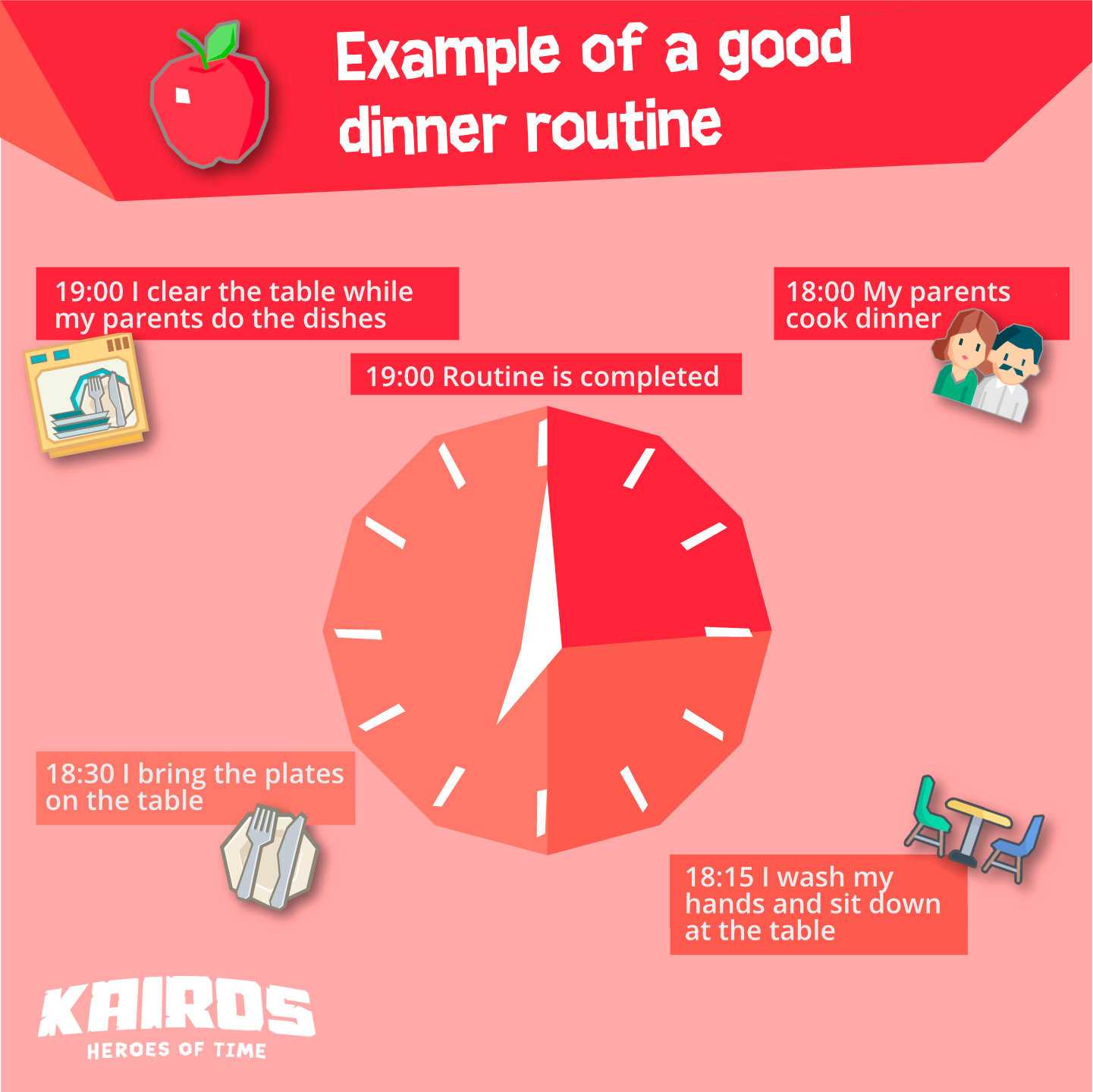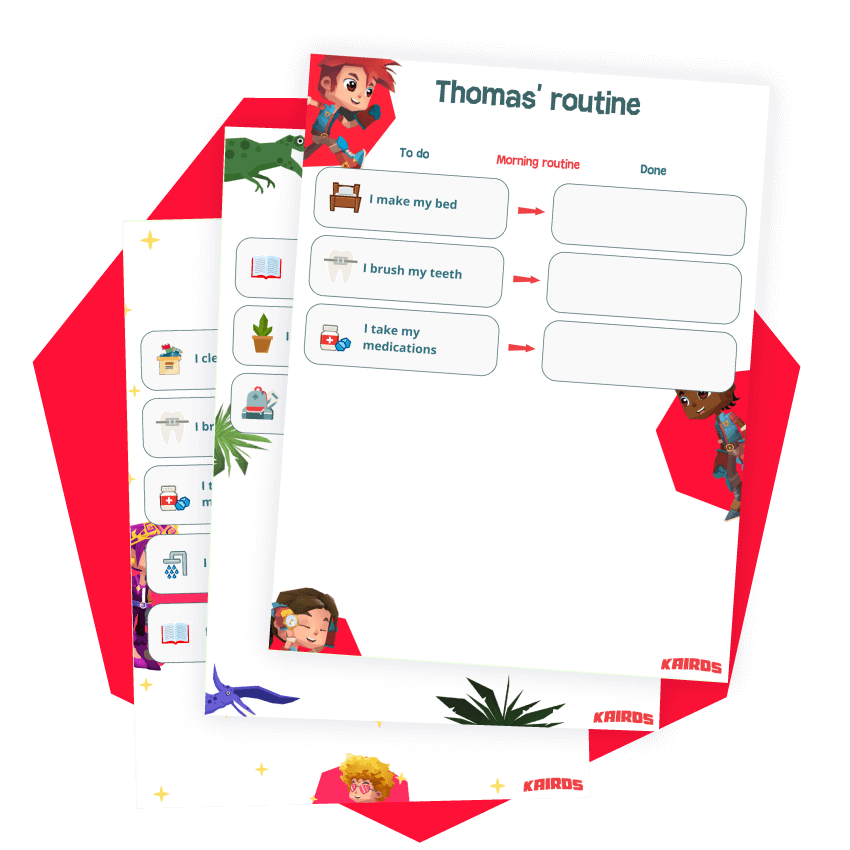Routines are no reason to get a headache! The Kairos team has prepared four parent approved routines for children to try today at home for the morning, dinner, homework and bedtime routine.
Downlaod the chores chart for free
Morning routine
Children tend to get up early in the morning in the weekend. On the other hand, asking them to leave a cozy bed to go learn and not play is a whole different challenge.
Even adults sometimes have a hard time motivating themselves at the start of the day (without their coffee).
Maximize your chances of having a much more zen morning by applying the Kairos morning routine.
PS: The best routine is the one you create with your kids! Feel free to make any necessary changes. Visit the Kairos routine chart to download our free customizable routine chart.
Example of a morning routine for children

- 7:00 a.m. I get up no later than the second ring of the alarm clock
- 7:05 I go to the bathroom and get dressed
- 7:15 I put away my pajamas and make my bed
- 7:20 I eat
- 7:40 I take my medicine
- 7:45 I brush my teeth
- 7:55 Dressing for school
- 8:00 It's time to leave!
Kairos Tip: Feel free to illustrate the routine. To help you, print the Kairos routine chart for free. All icons from the Kairos app are available to download!
Throughout the morning routine, Bryn Huntpalmer of parenting blog A Fine Parent recommends encouraging your child to take ownership of the chores and try not to do everything for them. It might be faster in the short term to put their pants on for them, but you won't be developing their autonomy in the long run.
Homework routine
With homework, the key to success is showing your enthusiasm! You are a role model for your child. If he sees that education matters to you, he will be more motivated. If you or your kid view homework as a chore, the joy of learning will not be there.

Follow his progress, highlight his successes. Above all, give him the right to make mistakes. After all, he is there to learn!
The hardest part of the homework routine is managing the transitions. He comes home from school, full of stimulation, and he is asked to concentrate. Fortunately, there are plenty of tricks to better manage transitions. For example, make sure to have a buffer time between school and homework. 15 minutes to cool down and grab a snack might be a good idea!
Also encourage him to read and be interested in new things. In short, cultivate their curiosity and their passions. ;)
Sample Homework Routine

Routine inspired by ADDitudemag
- 3:30 p.m. Grab a snack and relax from school.
- 4:00 p.m. Install your child in his usual place for homework; make sure all tools are available (pencils, paper, calculator, reference books, etc.).
- 4:05 p.m. to 5:00 p.m. Your child does their homework; you stay to answer questions and monitor breaks (stretching, bathroom, drink).This may be a good moment to prepare dinner. If other family member are also busy with chores, it will be less tempting for your child to go do something else.
- 5:00 PM Check his work and calmly review anything he should change (but don't do it for him). Congratulations for his good work!
Dinner routine
Importance of meals
Mealtime is one of the most important times of the day. We recharge our batteries, we relax, and we meet again!
You don't have to follow a strict routine to speak of. However, having a few ground rules will help your child understand the importance of being present at mealtimes. You will thus transmit to him the pleasure of eating well!
Kairos Tip: Use pictograms to represent tasks and make reminders. For example, stick a toothbrush icon on the correct drawer in the bathroom. It will remind kids to brush their teeth as part of their routines. You can download free routine cards to print here.
A Good Dinner Routine

Routine inspired by ADDitudemag
- 6:00 p.m. Parents begin food preparation. Organize the preparation in such a way as to avoid the delay of the meal.
- 6:15 p.m. Children set the table. Give them specific tasks to instill in them a sense of responsibility.
- 6:30 p.m. The children sit at the table.
- 6:45 p.m. Parent(s) bring food to the table.
- 7:00 p.m. Dinner is served. For a mealtime chat, try this: Go around the table—one or more times—and ask each person to share one good thing about their day.
- 7:30 p.m. Children clear the table. The parent(s) fill the dishwasher.
Bedtime routine
The ideal schedule
The bedtime routine is often the parents' Achilles' heel. Fortunately, knowing a few secrets can greatly increase the chances of success. Try the following routine so that your children quickly fall into the arms of Morpheus.
Sample Bedtime Routine

Routine inspired by ADDitudemag
- 8:00 p.m. Bathtime! It is a good moment for your child to start relaxing.
- 8:20 p.m. Three-part routine: dry off, brush teeth and pee. You don't want to hear, "Mom, I have to go to the bathroom!" five minutes after saying good evening.
- 8:30 p.m. Get into pajamas and clean up toys to set a night, not play scenario.
- 8:40 p.m. Read together.
- 8:55 p.m. Your child goes to bed. Do your evening routine: talk a bit about the day, praise your child for things they did well, say goodnight.


